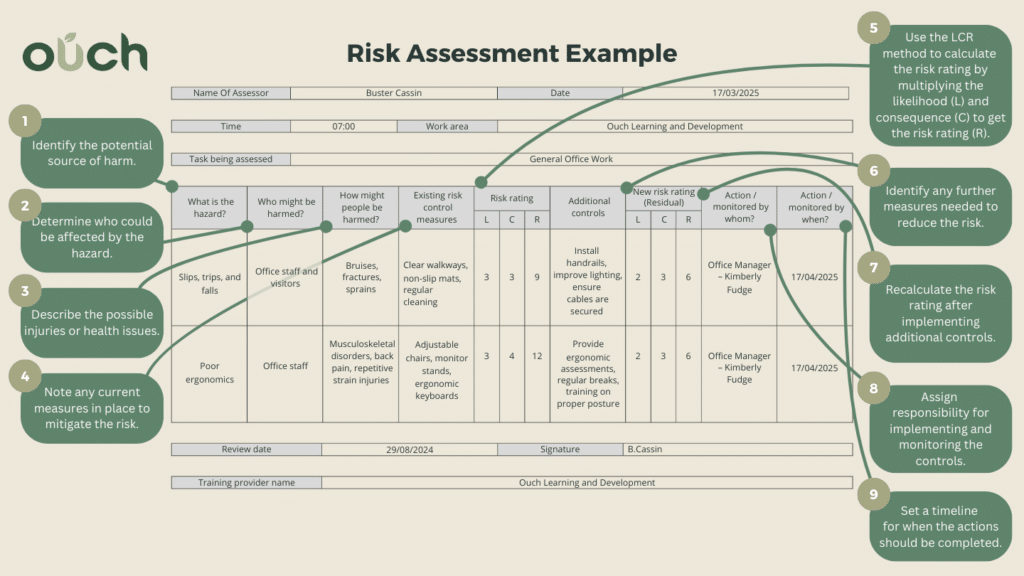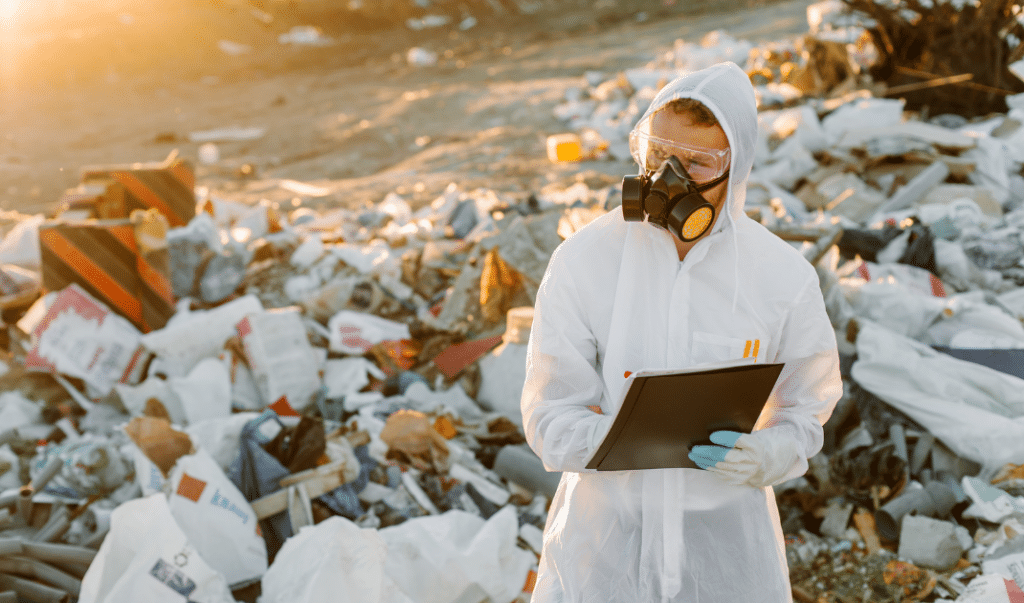Today, let’s explore the important world of risk assessments. Whether you’re new to the concept or looking to refine your skills, understanding how to create a thorough risk assessment is key for maintaining a safe and compliant workplace. Ready to see some stunning risk assessment examples and learn how to write one? Read on to learn more.
What is a Risk Assessment?
A risk assessment is a systematic process used to identify potential hazards in any setting—be it an office, construction site, or healthcare facility. This means, the goal is to recognise risks, evaluate their potential impact, and implement steps to reduce or eliminate them.
Why Are Risk Assessments Important?
Risk assessments are vital because they help you:
Identify Potential Hazards: Uncover hidden dangers and vulnerabilities that may affect your projects, products, or services.
Prioritise Risks: Focus on the most critical issues first based on their likelihood and potential impact.
Develop Mitigation Strategies: Devise effective strategies to minimise or eliminate risks.
Enhance Decision-Making: Provide valuable insights for better decision-making and strategic planning.
How to Write a Risk Assessment
Writing a risk assessment involves several key steps:
- Identify the Hazards: Walk around the workplace or project site and note any potential dangers. Talk to employees or colleagues, as they often notice things that might be overlooked.
- Determine Who Could Be Harmed and How: Consider employees, visitors, contractors, and the public. Think about both direct and indirect risks.
- Evaluate the Risks and Decide on Control Measures: Assess the likelihood and severity of each hazard. Implement measures to reduce or eliminate risks.
- Record Your Findings: Document the hazards, their associated risks, and the control measures you’ve implemented.
- Review and Update: Regularly review and update your risk assessment to ensure it remains relevant and effective.
Key Elements of a Risk Assessment
When conducting a risk assessment, it’s essential to consider several key elements to ensure a comprehensive evaluation of potential hazards and their impact. So here are the critical components to include in your risk assessment:

1. What is the hazard? Identify the potential source of harm.
2. Who might be harmed? Determine who could be affected by the hazard.
3. How might people be harmed? Describe the possible injuries or health issues.
4. Existing risk control measures: Note any current measures in place to mitigate the risk.
5. Risk rating: Use the LCR method to calculate the risk rating by multiplying the likelihood (L) and consequence (C) to get the risk rating (R).
6. Additional controls: Identify any further measures needed to reduce the risk.
7. New risk rating (Residual): Recalculate the risk rating after implementing additional controls.
8. Action / monitored by whom? Assign responsibility for implementing and monitoring the controls.
9. Action / monitored by when? Set a timeline for when the actions should be completed.
Stunning Risk Assessment Examples
Here are some examples of risk assessments across various industries:
- Health and Safety Risk Assessment: Evaluates potential hazards in the workplace, such as machinery, hazardous substances, and ergonomic risks.
- Cybersecurity Risk Assessment: Identifies vulnerabilities in IT systems and implements measures to protect against cyber threats.
- Environmental Risk Assessment: Assesses the impact of business activities on the environment and develops strategies to mitigate negative effects.
- Project Management Risk Assessment: Analyses risks associated with project timelines, budgets, and resources to ensure successful project completion.
- Supply Chain Risk Assessment: Evaluates risks in the supply chain, such as supplier reliability and transportation issues, to maintain smooth operations.
Learn About Risk Assessments with Ouch L&D
If you want to learn more about risk assessments, one of the key components of the IOSH Managing Safely® course is the risk assessment project.
This project allows learners to apply their knowledge by identifying hazards, assessing risks, and implementing control measures in a real-world scenario, ensuring they gain practical experience in conducting effective risk assessments.
Learn more about the course here: IOSH Managing Safely.
Conclusion
Risk assessments are a fundamental part of maintaining workplace safety. By following the steps outlined above and incorporating key elements like the LCR risk rating calculator, you can create stunning risk assessment examples and even show others how to write one.
Edited by Business Manager, Kimberly Fudge
